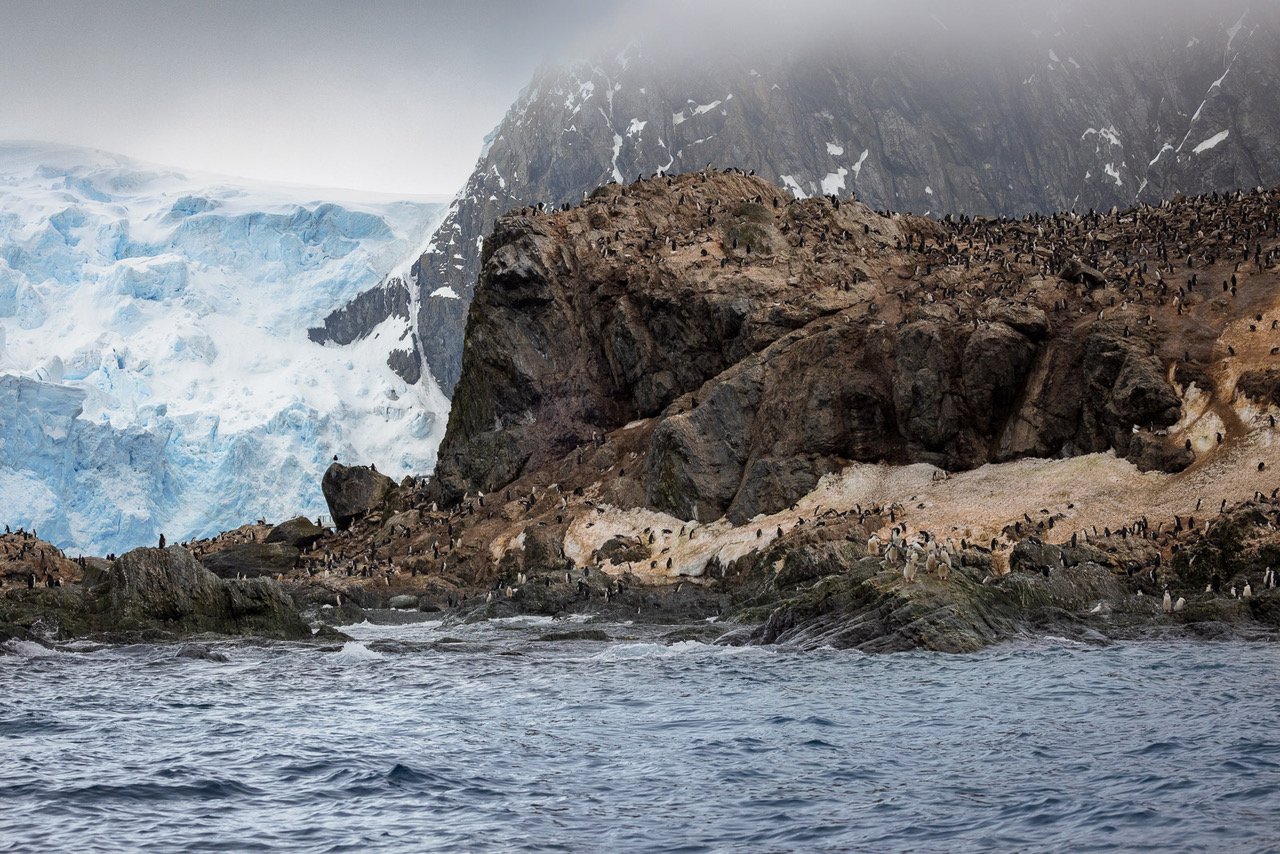
A Journey to Elephant Island – Point Wild – Antarctica Entry 9 by Cindy Goeddel
Follow Cindy Goeddel as she describes seeing walls of rock, ice, Chinstrap Penguins and more when visiting Elephant Island.
Off the coast of Antarctica lies Elephant Island, ice-covered and mountainous. At the North end there is a small narrow low-lying sand and gravel point, which rises to a small rock outcrop; sheer tidewater glaciers and cliffs fringe the point. The location exposes it to the full force of Antarctica’s ferocious weather.
It was here in April 1916, on the North side of the island, that Ernest Shackleton and his 27 men landed in three small boats, 5 months since their ship the Endurance had sunk, 14 months since she had become frozen into the ice and 497 days since they had touched dry land. The following day they moved further north and set up camp on a rocky narrow beach which they named Point Wild after Frank Wild, Shackleton’s right-hand man. It was here that they camped. Shackleton understood that he would need to get to an inhabited place if they were to be rescued so, on April 24th, he set out with 5 men in one of the boats, leaving the remaining 22 on the rocky outcrop. Landing on South Georgia on May 10th, Shackleton and two others crossed the backbone of mountains that runs the length of South Georgia and finally reaching Stromness Whaling Station. Returning with a rescue ship, they took on board the rest of the crew on August 30th. Not a life was lost.


We were able to take a zodiac cruise around the North side of the island, where a Chinstrap penguin colony nests over the entire steep rock outcrop. It is amazing that they can navigate the steep cliffs, but then Chinstraps are known as the rock climbers of the penguin world. A few Elephant Seals were lounging among the rocks and a Fur Seal swam near our zodiac. The glacier calved twice during our cruise. It is almost unimaginable that those men survived for so long on this remote, exposed, foggy, windy, icy and unforgiving spit of land.

